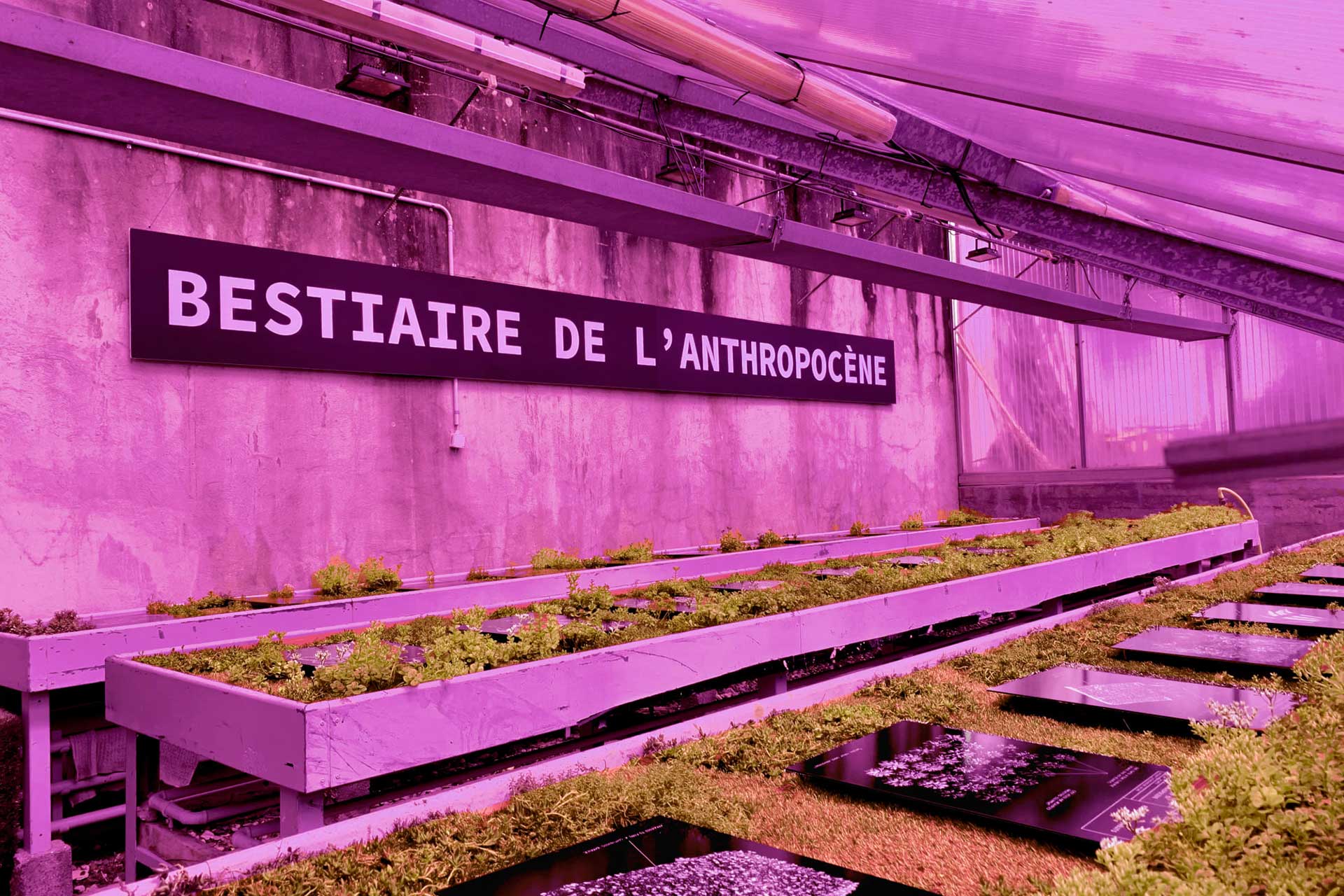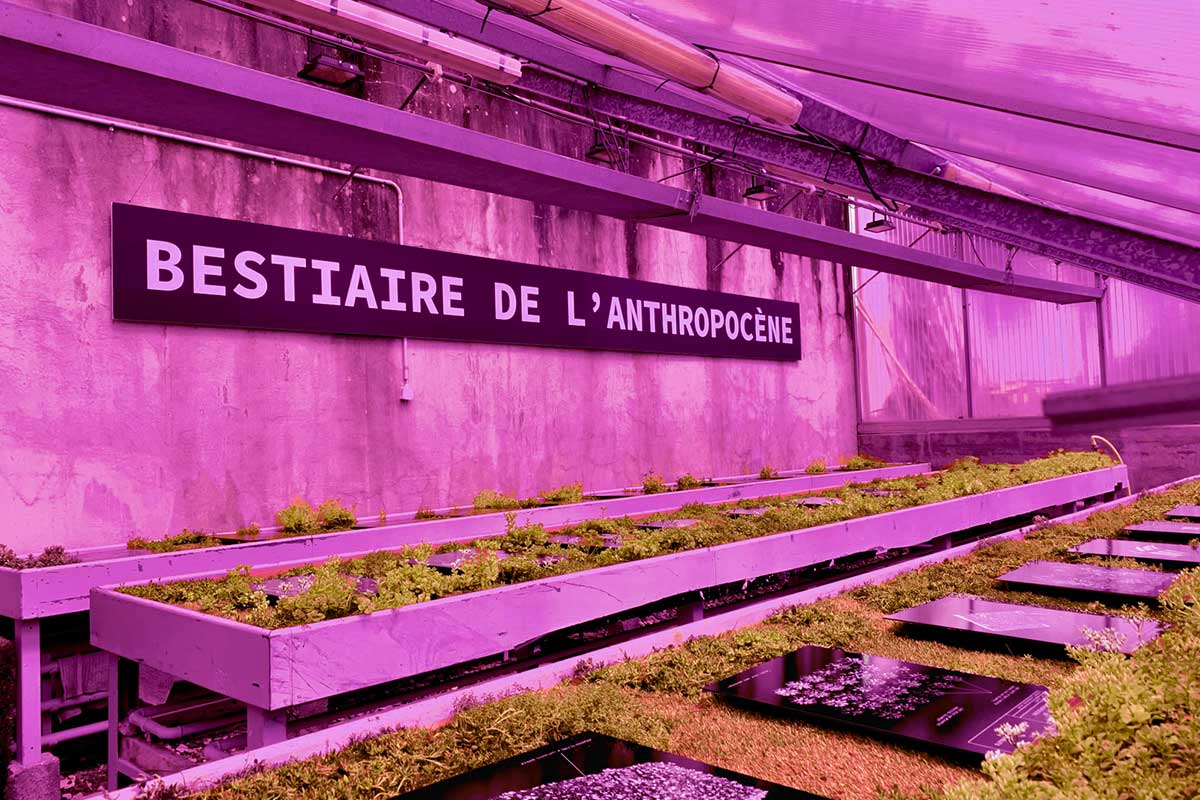Sars-Cov-2, 5G, plastic flowers or antenna trees. The newly developed creatures of our times portrayed in the last project imagined by Nicolas Nova and Disnovation
The Bestiary, an incipit of Anthropocene: The Human Epoch
Researcher and anthropologist concerned with digital and new media practices in the climate of contemporary cultures and environmental change. Nicolas Nova started navigating and documenting the current mutations within our ecosystem’s artificial layers around ten years ago. «Working on technology on one hand and culture on the other hand. Focusing on the environment around us. I started compiling examples of how this artificial character of the environment is becoming more and more», Nova recollects. His studies traverse the fields of technology, design, and social studies, allowing for a multidisciplinary approach to our world.
Therefore, The Bestiary of the Anthropocene becomes the first book attests to the phenomenons. Objects, and reshaped beings developed in our geological epoch. Nicolas Nova’s interest initiated with his research practice. In 2016 it became a collaboration with the Disinovation art collective that later took the form of an exhibition. Posters mixing the concept of Middle Age’s bestiaries and scientific analysis. Showcased around Europe in Paris, Montreal, Geneva, and Verona. In its intersection with art, professor Nova saw something. «The bestiary could change as a way to protest. As a way to understand controversies or to highlight the way our planet is currently changing».
Nicolas Nova – Working with artists
In Nicolas Nova’s perspective, the explorational meanings of art’s value and its bonds with communication intersect. He sees art as «one of the only epistemic perspectives that can think beyond signals, beyond disciplines». Therefore stimulate new forms of perception and meaning search. Helping us make sense of the issues we coexist with. «Working with artists for me has been eye-opening. As a way to probably get rid of my disciplinary perspective. To find a way to understand how we can observe our planets. How we can learn how to notice that something is wrong and problematic», states professor Nova.
Resembling a field book, the documented imagery of the pages becomes a tool; which one can take anywhere and use in a discovery exercise. Everything surrounding us is documented. In an objective and neutral perspective. People «can disagree with the situation. Moreover, they can think by themselves about the consequences of the world where all of this artificiality happens». Nicolas Nova confesses that the book and exhibition is «a way to be engaged with a participative mindset, in the absolution of these things». The long-term focus «is about training ourselves to understand and build a relationship with the world».
Technologies. A discussion about reliance with Nicolas Nova
Kingdom of minerals, animals, and miscellaneous. All the elements of our biodiversity are stripped of the denotative meaning. But remain in touch with the symbolic value gained by old bestiaries. By archiving the realms of our planet’s artificially tissue, the study links with «documenting the new forms of relationship. Not necessarily spiritual but some kind of disconnection. Some kind of fear, or angst of anxiety with a world that we do not understand anymore. Because it’s a mix of artificial technologies and nature».
Nicolas Nova captures the shift in the manifestation of micro rituals dedicated to something higher than humans. Stating that: «it’s about belief. It’s the belief or the disbelief in technology». Moreover «it’s not a spiritual relationship. Still, there’s a kind of assemblage between people who see something they don’t understand. Like a supernatural force that used to be connected with religion. Now it’s probably connected with technologies».
The phenomenon of hybridization between species
The Bestiary emphasizes the phenomenon of hybridization between species, organic and artificial. Between nature and technology, while in the book, our epoch is post-natural. We witness new design paradigms that take into account artificial and digital corporeality. When it comes to the future integration of the surroundings, Nova states: «there could be ways to think about virtual worlds that could be interesting. To conclude, that could be inclusive. That could allow people to explore new forms of sexuality; of sociability, or even relationships with the environment».
Nicolas Nova explains that relying on virtual realities or voyeurism is not harmful towards nature. Still, it also «shouldn’t be a commercial endeavor». Technology brought change both in the visual language and design structure. This one relies more frequently on hybridization as a method and result. Therefore, Nova attests to how «the main perspective designers should keep in mind; when they create is the habitability of the planet and the disabilities. For instance, it’s a mix of environmental justice and social justice. Without an ethic like this, design can not accommodate the adaptable process of our planet».
Human centrism and the ‘Laboratory Planet’
Etymologically, the Anthropocene represents the era of a new man. This is to say thet the current geological epoch in which humans become a primary cause of constant planetary alteration. The planet is pushed beyond its natural limits. In this sense, ‘A Bestiary of the Anthropocene‘ describes the planet as an entity that becomes a stranger to itself. «Managed like any other innovative company», which undeniably stays at the roots of our problem. «Maybe at this point, we don’t necessarily have the proper organizational framework to consider the relationship with our planet. We need new collective forms but consider common aspects; while the existing hierarchical forms need a change», further explains professor Nicolas Nova.
Individuality and collective
This juxtaposition between individuality and collective remains relevant in the relationship built with any form of the entity; since the man of this epoch can’t limit itself to pre-established prototypes. As doctor Nova portrays it: «The positive side is that we see shifts in this monolithic or homogeneous kind of perception». As a result «any fight, any struggle for social justice seems connected with environmental justice». Consequently, the book illustrates Covid-19 as a response to human impact and domination over biodiversity. «It is a disaster that has human origins – a ‘product’ of the Anthropocene». We are still making sense of what the pandemic has caused in behavioral conduct and relational attitude. In a way, it «made us realize that at a certain moment in time it would be great not to damage the planet but that we can’t help ourselves», confesses Nicolas Nova.
Untangling the design and corporarity in the Anthropocene
The bestiary illustrates species and creatures presenting a modification of form, design, and therefore aesthetic. From animals with plastic and plastic eaters. Therefore, the analysis suggests that we absorbed and appropriated a harmful material. «It seems that plastic embodies the main problem we have in the Anthropocene. We thought that the future was about being cyborgs with digital technology in our bodies. Still, no, the cyborg of today is the fact that we have plastic in our bodies». The creation of this material mirrors human power over resources and a beneficial deficit in repurposing them. «From a more general perspective, what is stunning in this context is that petrol compose plastic. Made of oil and gas that is made of bodies of dinosaurs and previous creatures» professor Nova explains.
Evolution and contemporaneity
Many of the creatures contoured in the book like antennas and robots trees. They share a mutation in form and fabric, and they all share the quality of artificiality and hybridization. «What these bodies have in common is that superficially they look the same. But if you look at the details, there are things that are different. Eventually, there’s a shift in the details. The role of the book was to help people pay attention to this» further attests Nicolas Nova. The same comparison happens between the human body of our times and that of the past. The intrusion of plastic in our bodies, the use of prosthetics such as glasses testify to permanent change.
How we understand evolution and contemporaneity can change into a perception exercise. In his future projects, Nicolas Nova plans to innovate educational methodologies. «What I’m trying to design is a roleplaying game where people can play in the context of the future, of the artificial and natural species. As a result, in each of the scenarios, the idea would be to immerse people in the relationship with artificial, natural, hybrid, and see how they live with them».
Nicolas Nova
Nicolas Nova holds a PhD in Social Sciences (University of Geneva), and another PhD in Human-Computer Interaction from the Swiss Institute of Technology (EPFL, Switzerland). He is both co-founder of the Near Future Laboratory, a research agency based in Europe and California, and Associate Professor at the Geneva University of Arts and Design (HEAD – Genève), where he teaches digital anthropology, ethnography and design research. He is also associate researcher at medialab SciencesPo in Paris.




















